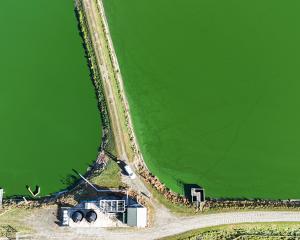
TGC Homes director George Hercus said he was frustrated with new soil testing requirements that added more than $300,000 to recent townhouse developments.
In Tainui, where a pre-1945 weatherboard home was demolished to make way for the new build, lead was detected in the soil, 520mg/kg, likely due to the presence of lead paint once used on the house.
As a result, the company racked up about $12,000 in environmental consultants’ fees, $10,000 in extra consent processing fees and nearly $70,000 to dispose of the "supposed contaminated soil" at the Burnside landfill, Mr Hercus said.
The Dunedin City Council said its new approach to mitigating the potentially toxic effects of lead paint once used on old houses would not have a "significant impact" on homeowners or development in Dunedin.
But Mr Hercus said the claim was "empirically incorrect".
"The DCC have their head in the sand if they think this policy won’t have a significant impact on homeowners or development in Dunedin," he said.
"It is yet another example of the clear lack of commercial acumen within our territorial authority."
The council’s "misinterpretation" of national standards and its resulting policy was adding $15,000 to $30,000 on to the build cost of every new home in Dunedin that required resource consent.
And the council was adding that same cost to any homeowner who wanted to subdivide their property or make an earthworks application for significant landscaping to their property, he said.

"I would really like the council staff to provide me and my colleagues and the wider community of comparisons with other councils around the country," Cr Whiley said.
"I’ve not seen a comparison with any other council around the country of how they’re implementing [the national standards] and what they’re doing."
Cr Whiley said he "couldn’t get the answer" he was looking for at the committee and remained "not 100%" on the issue.
Council acting customer and regulatory general manager Paul Henderson said the only rules at play were the ones in regulations that were applied nationally and came from legislation.
"The 210mg/kg is set by regulation and applies to all residential sites across New Zealand."
In the case of lead paint, councils across New Zealand received updated guidance from the Ministry for the Environment, as well as the findings of an independent review by Stantec, which said homes and other structures built before 1945 could be potential or unverified Hail (Hazardous Activities and Industries List) sites, due to the use of lead-based paint.
When applying the regulations for pre-1945 wood or roughcast buildings, the focus was on the soil in a 2m "halo" around the building, and to a depth of 300mm, he said.
It was important to note the regulation applied to the part of the site that contained the contaminant, which was not necessarily an entire site.
"It is not necessary to ‘remediate an entire’ site/property, except where contamination has occurred across the entire property.
"Only a small number of pre-1945 painted wooden or roughcast houses are demolished each year in Dunedin, and we continue to assess the impact in our city as being minor," he said.
Mr Hercus said the
"reality is that for any new development the entire site needs to be remediated".
In addition, all buildings at some stage needed to be demolished and replaced, which would trigger the need to remediate the entire site, he said.
A Ministry for the Environment spokeswoman said the ministry set the soil contaminant standards for lead through the Resource Management (National Environmental Standard for Assessing and Managing Contaminants in Soil to Protect Human Health) Regulations 2011 for a range of land-use scenarios.
"The ministry provides nationally consistent standards, and local conditions may influence how councils apply the rules."











